“I drained the land around Meremere and Hampton Downs. On the day Neil Armstrong landed on the moon, I was cleaning a drain up there.”
- Peter Arnet
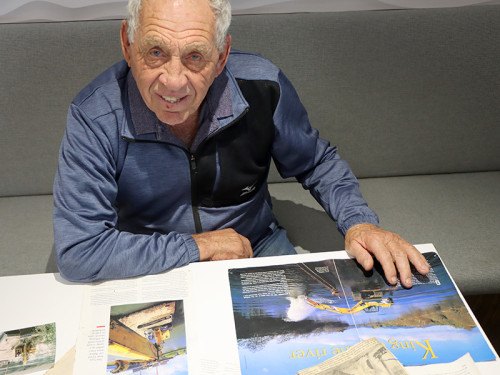
Peter Arnet, well known as the King of the River, operated diggers from the old Tamahere 94 barge on the Waikato and Waipā rivers for over 40 years.
Peter Arnet knows a thing or two about the importance of a working floating platform on the Waikato River.
Peter’s company, King of the River, was contracted from the 1970s to the early 2000s by Waikato Valley River Authority and then Waikato Regional Council to undertake river management and flood protection works on the river from the council’s old 24-metre Tamahere 94 barge.
The barge was laid to rest after being used as a work horse for about 50 years, with Peter operating up to two diggers on its deck to maintain the stability and capacity of the Waikato River. The Tamahere was eventually dismantled for scrap steel in 2019, 10 years after it had been decommissioned.
Work has now started on building the purpose-built, replacement vessel at Heron’s shipyard in Whangarei.
The new vessel is expected to be completed in mid 2024 when it will then make its way by sea to the Waikato River, entering at Port Waikato and going up the river to the council’s mooring site at Meremere – where its first job will be upgrading its own mooring.
The new vessel will be the same length as the old barge, but it’s quite a bit wider, reckons Peter, who visited the shipyard last month to check out its progress.
It will also be capable of taking a greater weight loading and has a propulsion system to enable navigation along the river.
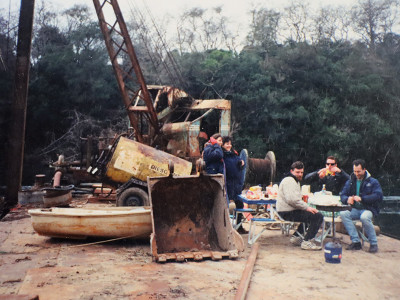
One of Peter’s photos from aboard the Tamahere 94 in the good old days.
“I wish I’d had a barge like that when I was on the river – it’s got two motors,” says Peter, which certainly wasn’t the case in his heyday on the Tamahere 94.
Way back then, Peter worked out he could move the barge upstream by pulling on the bottom of the river with a digger bucket, easily travelling up to 30 kilometres a day. To go downstream, he would paddle with the slew of the bucket, “like I’m swimming backstroke”.
“A lot of people would stop on side of the road just to watch, and say, ‘oh I thought I had seen it all’.
Peter acknowledges things have changed quite a bit since then.
The new vessel will meet all environmental and health and safety requirements, keeping the river and operators safe, and hopefully have a long and productive life, just like the Tamahere.
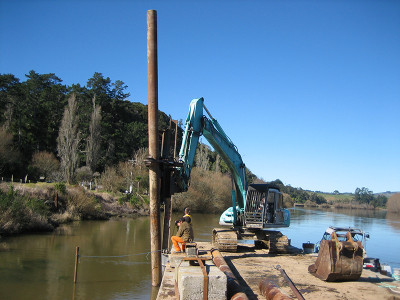
A floating platform helps support the maintenance and construction of infrastructure along the river.
Over his life’s work on the river, Peter put in jetties, laid pipelines and irrigation schemes, worked for power stations and dairy factories, moved islands, straightened and dug channels, cleared willows and shoals, and controlled erosion along the riverbanks.
“I drained the land around Meremere and Hampton Downs. On the day Neil Armstrong landed on the moon, I was cleaning a drain up there.”
He even used the barge as a platform to transport the Māori Queen, Dame Te Atairangikaahu, from the waka that paddled her down the Waikato River to her final resting place at Taupiri Mountain.
“She was always a good barge; never been any problems. I was really sorry to see her go,” says Peter, who at the age 80 is still working, eight to nine hours a day, as a digger owner-operator.
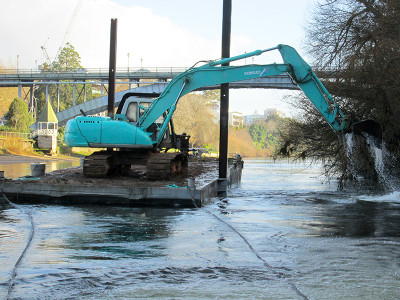
Removing the old Waipa Delta dock in Hamilton.
“It’s been my life, right through, working on the river. I know every corner and every sandbank.”
The new vessel will be operating on the river from mid to late 2024, removing obstructions such as dead trees sitting on the riverbed and helping with erosion protection works.
When not being used to deliver on the council’s work programme, the vessel will be available to other agencies to support maintenance and construction of infrastructure along the river.
The replacement vessel construction project received $1.92 million in funding from the COVID-19 Response and Recovery Fund. It is one of 48 climate resilience and flood protection projects supported by the fund administered by Kānoa, the government unit responsible for regional economic development and investment.

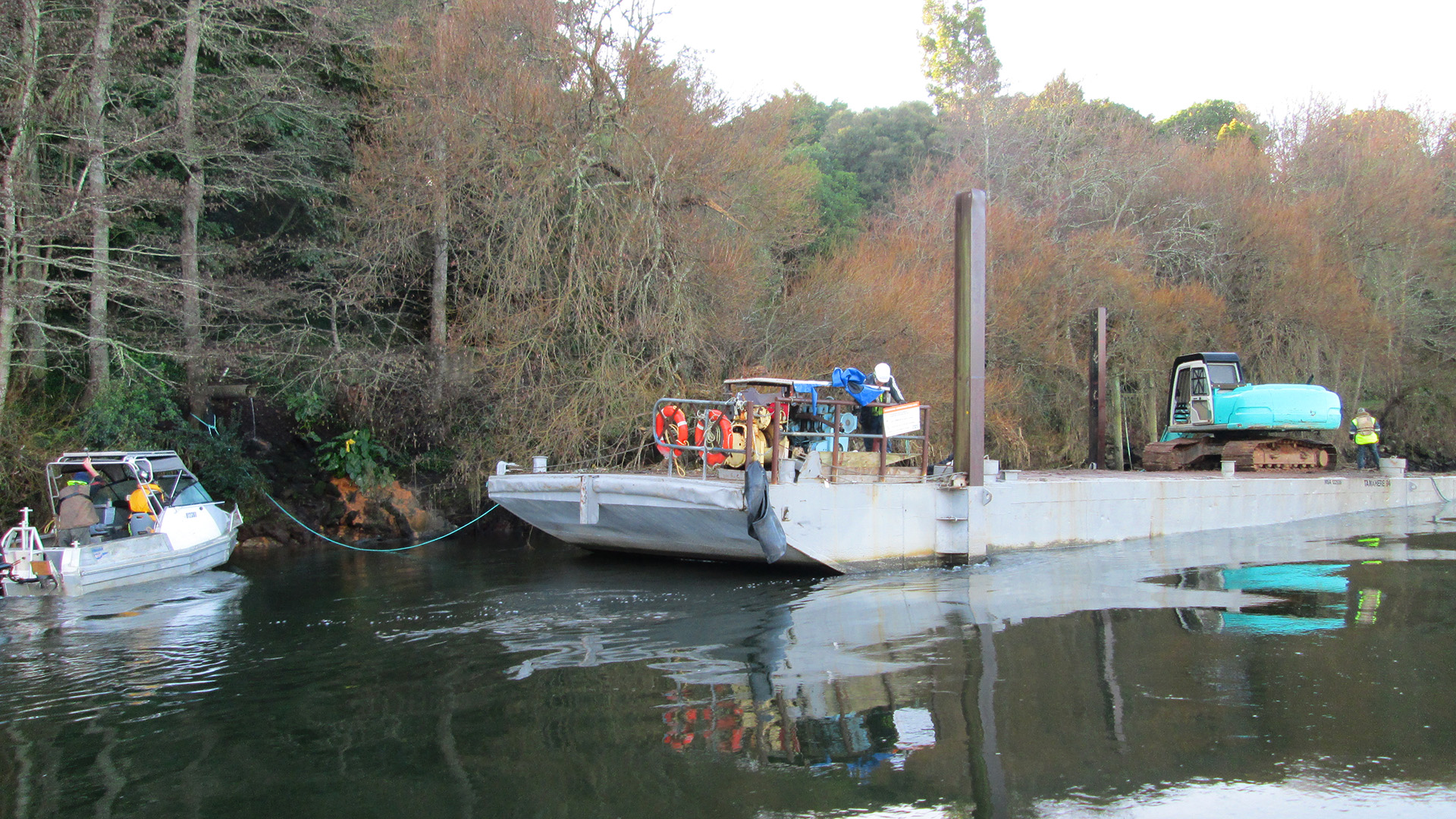

To ask for help or report a problem, contact us
Tell us how we can improve the information on this page. (optional)